Traces and Places: Making Borders Visible in Paris’ 18th Arrondissement
Posted:
Time to read:
Guest post by Carolina S. Boe and Henry N. Mainsah. Carolina is a post-doctoral researcher at SERR, Aalborg University. Her research specializes in incarceration, detention and deportation in France and the USA. With Ines Hasselberg of Border Criminologies, She is the co-founder of the Anthropology of Confinement Network together with Ines Hasselberg. Henry is a Marie Curie fellow at the Centre for Interdisciplinary Methodologies, University of Warwick. His research covers subjects such as interdisciplinary methodologies, digital culture, design, identity, learning, and youth culture.This is the fourth instalment of Border Criminologies’ themed series on ‘The Memory Politics of Migration at Borderscapes’, organised by Karina Horsti.
During the past years, thousands of migrants have been sleeping on the streets of Paris’s 18th arrondissement. Their makeshift camps are regularly destroyed by the police, in an attempt to render their presence invisible. However, the authorities, citizen activists and migrants themselves leave traces behind, such as graffiti on walls, garbage on the street, and forgotten objects. More or less voluntarily, such traces render urban borderscapes visible to a critical gaze. This blog post is inspired by a desire to explore ways of rendering visible what is often left unseen and take part in the generation of memory politics.
Paris’s 18th arrondissement is traditionally a place of migration, of bordering and of boundary making. In the 18th and 19th century the area welcomed peasants who migrated to Paris from various regions of France and joined Paris’s ‘dangerous’ classes; Montmartre’s artistic Bohême; refugees and migrants from all over the World. The area also has a history of state violence, the site of conflict during the Commune and an area from which Jewish Parisians were deported to concentration camps during WWII.
The area is diasporic, post-colonial and touristic. Scents and tastes from North Africa, West Africa, South-East Asia or South Asia, can be found at Barbès-Rochechouart, Château-Rouge, Rue de L’Évangile and La Chapelle. People from all neighbourhoods of Paris, from all regions of France, and from abroad come here by métro, train or small collective buses to visit the sights around the Sacré Coeur, to buy Dutch wax, nước mắm, masala or rose water, or to connect with fellow worshippers at a church, synagogue, mosque or at the Ganesha Temple. The area’s boundary drawing, however, seems to be based more on class than on places of worship, consumption and urban dwelling. Here, people of all backgrounds mingle, as do pupils in the areas’ state schools. However, with the middle and creative classes buying up large apartments in the area, and with the growth of culture and consumption establishments that aim at gentrification (sometimes with the help of the Municipality of Paris), the area is experiencing new social boundary-drawing.
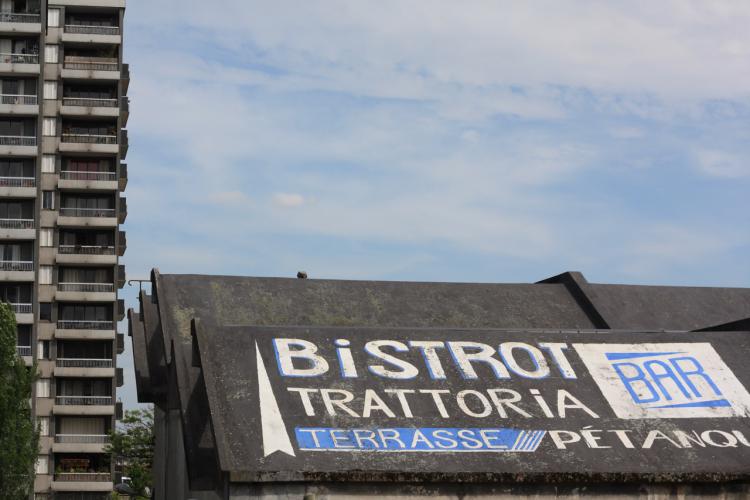
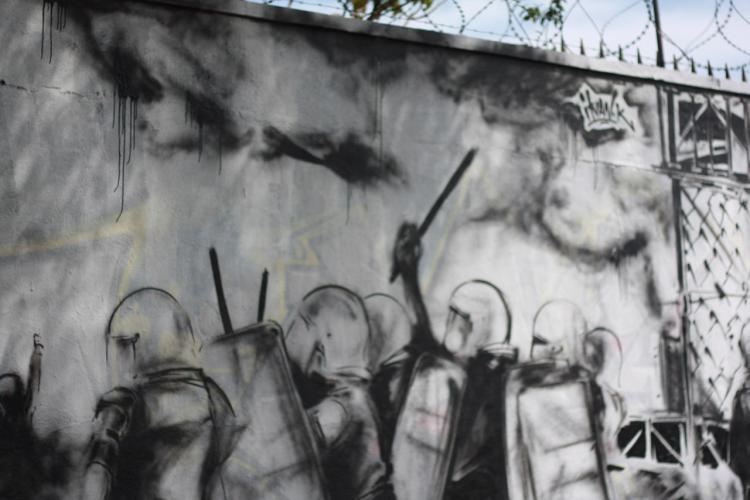

The photos that we use in this blog post are the result of a walking tour we took around Paris’s 18th arrondissement. We were inspired by photographer Peter Coles’ ‘Paris Traces’ projects of objects deliberately left behind in the street of Paris: Jim Morrison-related graffiti at the Père Lachaise cemetery; and, graffiti on the birches of the Quai du Louvre.
On the day of the walk, we met in the area, in Carolina’s apartment. Carrying with us our cameras and notepads we went on a route from Rue de Clignancourt to Porte de la Chapelle, searching for traces left by exiles, citizens and authorities. In the book ‘Ways of Walking: Ethnography and Practice on Foot’, Tim Ingold and Jo Lee Vergunst suggest that when we engage our body in the act of walking, we perceive our environment through multiple sensory registers: seeing, hearing, touching, smelling, and tasting. Walking affords us the opportunity to use our own sensory embodied experience as a medium through which we try to create an empathic connection with the experiences of those who have been displaced.
Current bordering practices are also reflected in the area, where many foreign-nationals live. Nation-state borders were, of course, never similar to those lines traced in atlases or weather maps. There have always been areas that were simultaneously situated within and outside the physical space of each nation-state, such as international zones in sea- and airports or the spaces surrounding persons protected by diplomatic immunity. The area around Gare du Nord, where trains came in from afar, had customs buildings, for instance. Nicholas De Genova assertion, that “The spacialized condition of ‘illegality’ reproduces the physical borders of nation-states in the everyday lives of innumerable places throughout the interiors of the migrant-receiving states” (2002) resonates with this area, given the various immigration statuses of the inhabitants in the neighbourhood. Each reform of French immigration law and each political decision to enforce them have had their impact on the neighbourhood, whether in Nicolas Sarkozy’s quota on the number of yearly arrests and deportations of undocumented migrants or police enforcement of exiles sleeping on the streets.
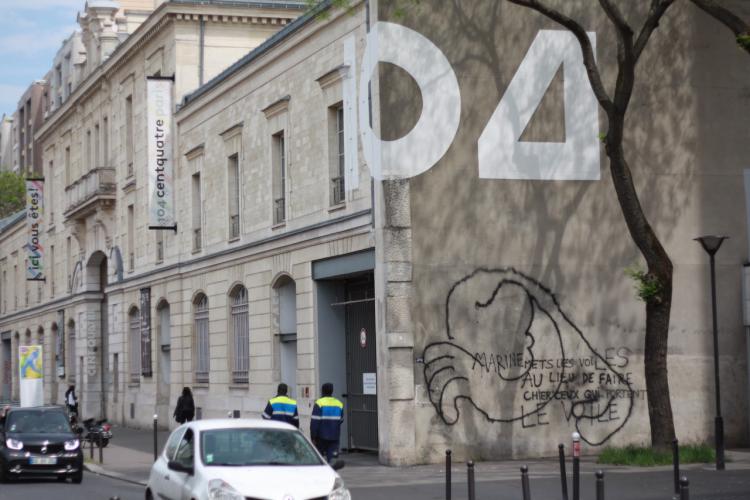

As we arrived at Porte de la Chapelle, we immediately felt a sense of tension in the air. The area felt under siege, with several police vans and a mass presence of patrolling armed policemen. Porte de la Chapelle is located at the periphery of Paris, Aubervilliers and Saint-Denis at intersections between the A1 highway, the Tram, and the Boulevard Périphérique - the Paris ring road. The crossroad smells of gasoline and urine and the soundscape is saturated with the sounds of cars, trucks, buses, trams, and humans. Most people seem to be busy trying to get away, others clearly live here. A drug user chatted Henry up, congratulating him, as a fellow African man, on having succeeded with his life. Some citizens stopped their car to give huge packs of water bottles to small crowds of exhausted-looking men waiting to be received in a reception centre for refugees “La Bulle”, or “the Bubble”; where approximately 80-100 persons a day receive counselling, basic humanitarian aid, and may be provided with a few nights’ sleep in emergency accommodation, before having to move on again.
A few days before our walk in the area in May 2017, the police had evacuated around 1600 refugees who had erected a makeshift camp under the bridges of Porte de la Chapelle, only a few hundred metres away from the reception centre. The police destroyed the camp and bussed many of them out of Paris to emergency accommodation across France. Many will return by foot, as Paris is where they can connect with their peers, ask for asylum or continue their journey somewhere else.
There were only a few traces left of the makeshift camps that had been destroyed and the thousands of migrants that had been staying there. We went under the bridge at Boulevard Ney adjacent to the Porte de la Chapelle metro station.

Across the road passing, under the bridge, we saw a group of African men lying on makeshift mattresses. We approached them, offered greetings, and asked if it was okay to take some pictures of the large rocks that surrounded them. The rocks had been dropped there by the Municipality of Paris in February, and received criticism from civil society organisations that they were there to effectively prevent people from sleeping in the area and thus urge them to move on.
The rocks quickly became an art installation of some sort, as a group of activist stone-carvers inscribed words, like “equality”, in French on them. They also carved a rock “in memory of those who did not arrive”, in a bid to create a memorial for those who have perished on the Mediterranean Sea and on the roads of Europe. Somewhat involuntarily, from the municipality’s part, the rocks have become a monument to the French authorities’ policy consisting of harassing exiles so much that they will simply leave somewhere else.
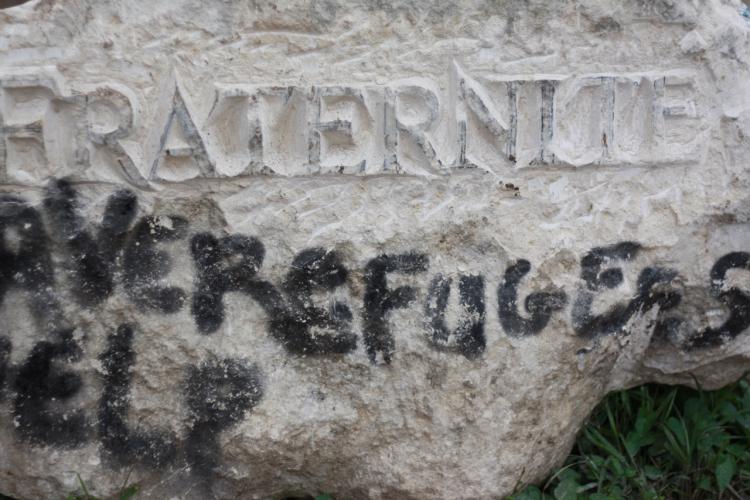
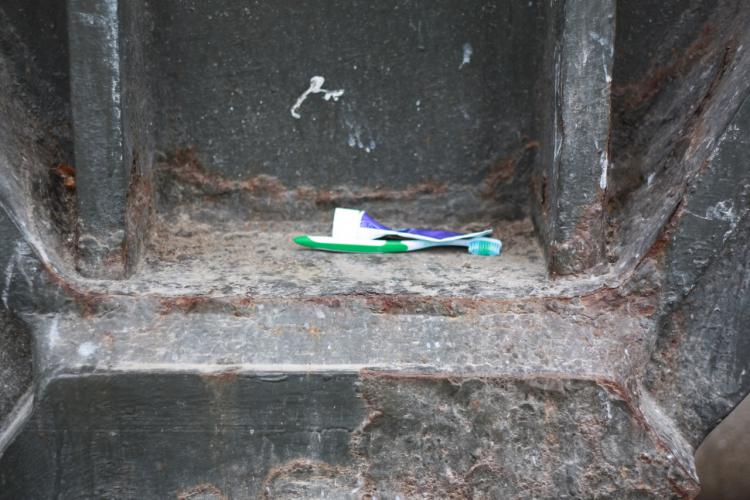

Through photographing our walk, we asked what happens if we refocus our attention on objects instead of people? On traces left behind, instead of full-blown images of people sleeping rough on the streets, or the usual scenes of evacuations, statements by city officials, and journalists on the scene? What stories of our recent past and present border- and boundary-making can we tell by focusing on the periphery instead of the centre, on edges instead of landmarks, on abandoned objects, garbage, graffiti, and smells of human waste? Which histories can we re-enact from these traces of people’s displacement, which are either silenced and erased or exposed, depending on the narratives that are adopted?
These were some of the questions we asked ourselves. We are still trying to figure out the answers. However, what we know for sure is that we need to find new ways of seeing, if we are to fully understand the meaning of borders in the city.
Any comments about this post? Get in touch with us! Send us an email, or post a comment here or on Facebook. You can also tweet us.
__________
How to cite this blog post (Harvard style)
Boe S., C. and Mainsah N., H. (2017) Traces and Places: Making Borders Visible in Paris’ 18th Arrondissement. Available at: https://www.law.ox.ac.uk/research-subject-groups/centre-criminology/centreborder-criminologies/blog/2017/06/traces-and-places (Accessed [date])
Share:








